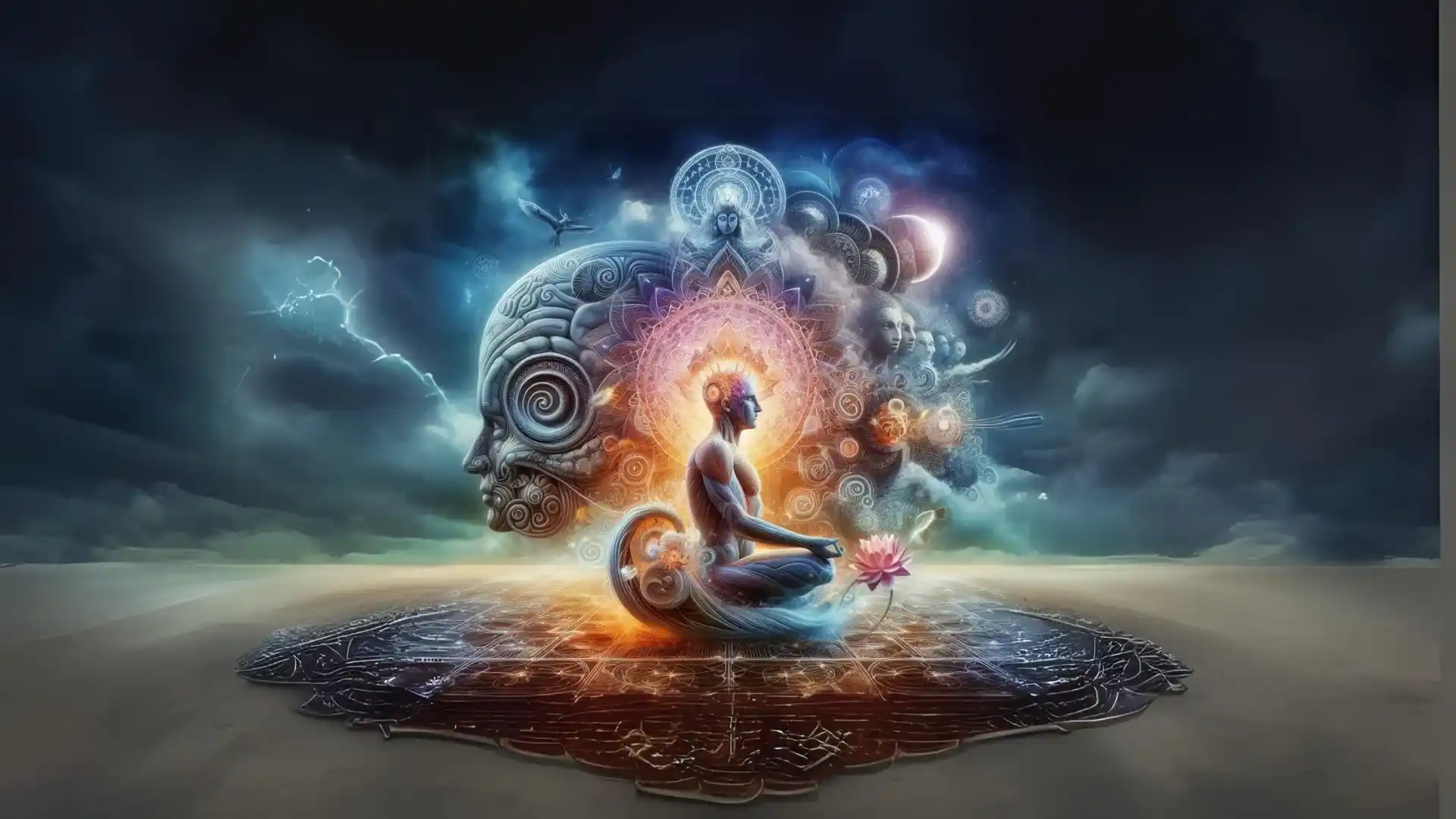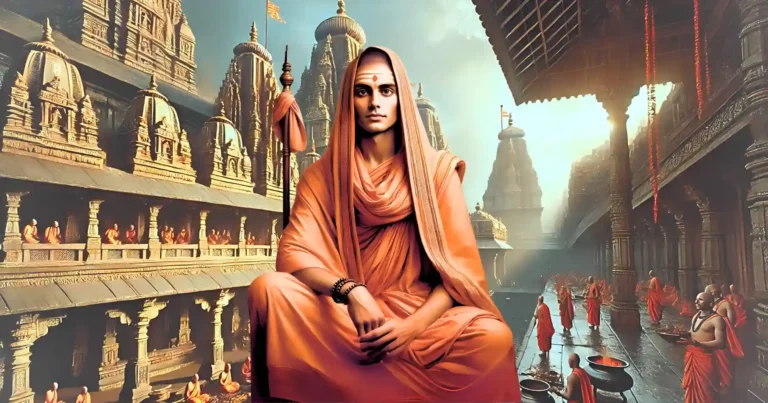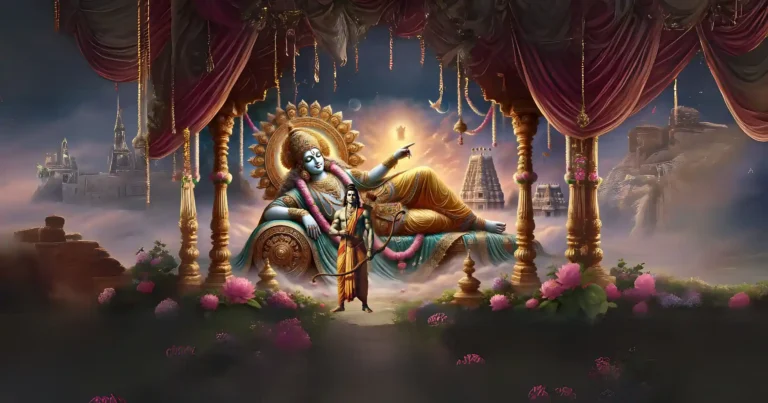Please Like the Blog and Share it for Maximum Reach
Table of Contents
Is Mind superior to Consciousness?
Man is trapped by the mind. The mind is the aggregate of opinions, thoughts, feelings, emotions, convolutions of various kinds and what not. This is also known as Samskaras in classical Sanskrit. This trapping of the mind is what we call the world. When man is trapped by the forces of the mind, one experiences the world.
He experiences the world at various levels. We experience our own thoughts, feelings and emotions. Additionally we experience our body, other people, things, time, place and circumstances.One should know that the duality in all this, the expression of the many arises from the mind. Strangely, the mind is inert.
It is as dead as a fan or light bulb. Just like a bulb requires electricity to trigger effulgence, the mind requires external support to function. By itself, it has no potency. It is like an appliance which requires the power of consciousness to express itself. When consciousness touches the mind, the world comes alive.But, then there are two distinct physical entities which come alive. One is my body and whatever I imagine as “Me” and then there is the rest of the world “Out there”.
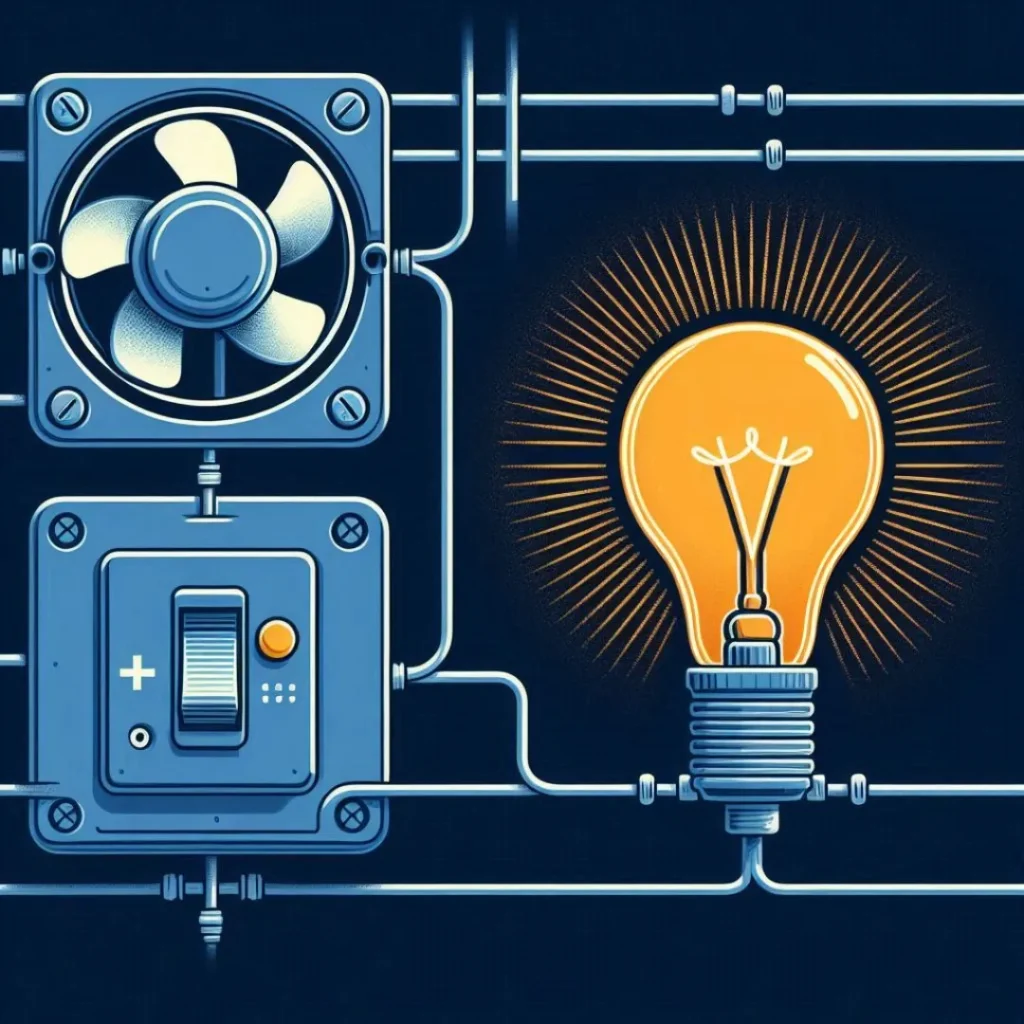
Mind, World and Consciousness
Man tends to define life as an endless interaction of his physical “being” with the rest of the world. This is his limited understanding. It becomes vital for man to understand his position in the world of objects and people. This can help him regain some sanity and sanctity in his dealings with the world.
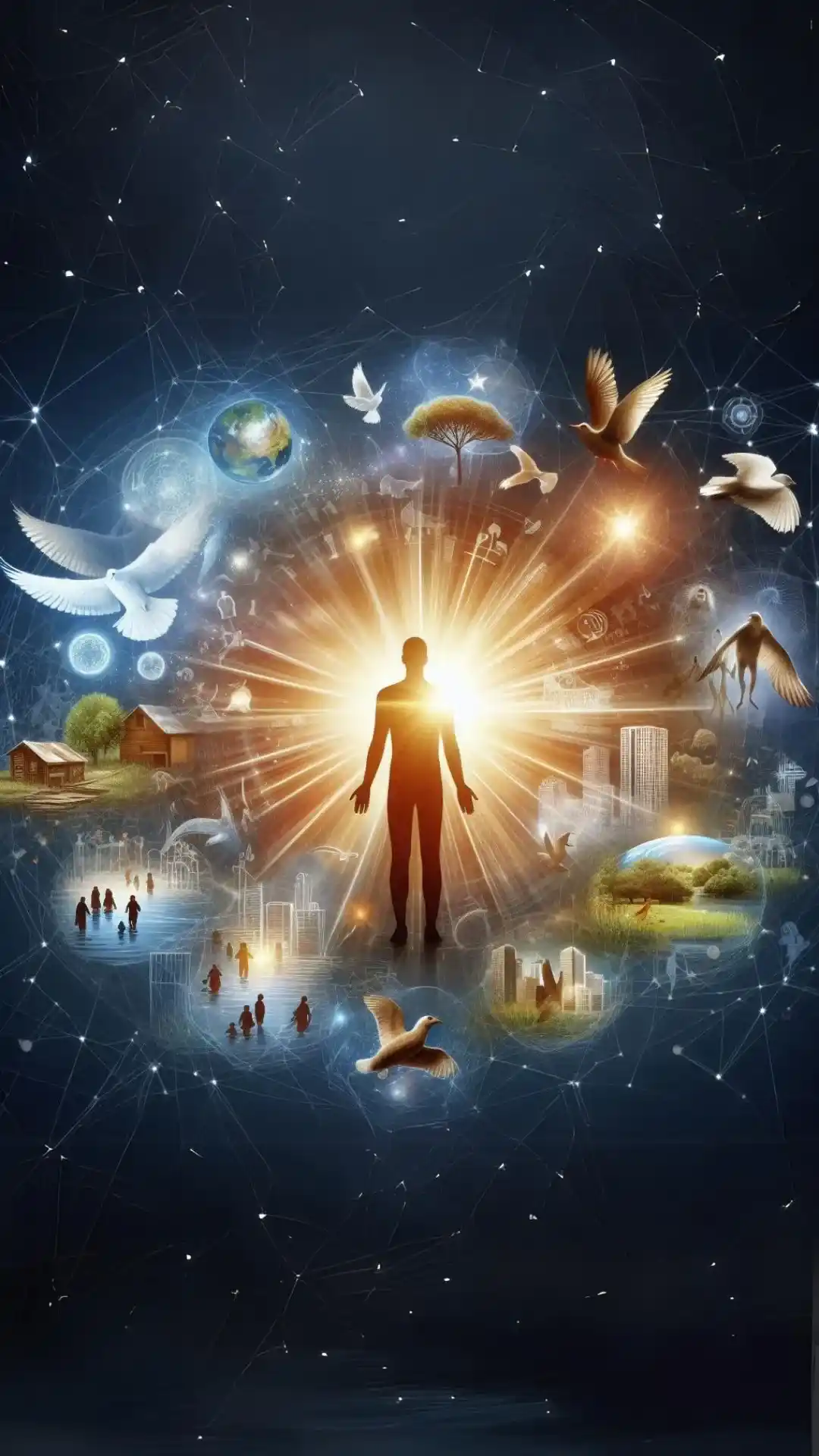
It has living entities who may or may not know each other. In other words, it is creation, distinct from universal consciousness. As you see the green circle suspended in the Blue one, the creation is just a part of the universal consciousness. Creation is subservient to Universal Consciousness.
What is Conscience

Conscience is that which tells you that you are a conscious being. A man with Conscience is a person who is naturally aware of his inner state and always tries to bring about the right balance between thought, word and deed. A man without conscience is like a dead body who is not aligned with what is moral. On the other hand a man of conscience is a man of integrity and lives by Truth.
What is the Peak of Consciousness?
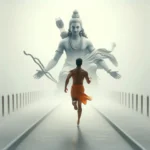
The Peak of Consciousness is when Man realizes that there is a Creator and what exists in his field of experience and beyond is His Creation. When one is aware of the Creator, also known as God or Bhagawan, born out of inner awakening, is the peak of Consciousness. Nothing else other than such consciousness can be considered the peak of Consciousness.
How can we Remove Ignorance and What are the steps?
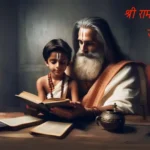
Ignorance can be removed only through Self-Enquiry. This is the first stage. Only when we totally accept that we are ignorant can we remove ignorance. When we accept from our very core that we are absolutely useless, with all humility, will the next door towards Truth open up. Then when one searches, Nature opens new doors towards Guru. When we meet our Guru, that indicates the second step. With the guidance of Guru, we begin sadhana and start enquiring deeper into the deep processes of life. This shall remove the major layers of ignorance. This was the third step. At the final stage, we have to surrender completely through the Guru to the one who is the source of everything, Bhagawan. This is the penultimate stage. Then till the stage of God-realization, it is on auto mode. This is the fifth and the last stage.
Nature of Purified Consciousness
Consciousness is everything. It itself is the subject, the Knower, the eternal witness of all happenings and everything we see around. It is the eternal subject, unaffected by time, life or its processes. Consciousness is the source of life. Consciousness can never be known because it is the one that knows.
However, one can experience consciousness when its pure reflection falls on a clean mind.The goal of a living entity is to get established in that consciousness which is pure and undiluted by variety. When the variety of people, place, thoughts, etc unite, it becomes Pure consciousness. Knowing this truth is the essence of Vedanta.Consciousness is beyond space and time.
It is the source of all intelligence. It is consciousness alone that defines the eternal law. Sanatana Dharma is all about getting established in that “One” consciousness, beyond which there is no more search to undertake. The purpose of all Yoga is to go beyond the concepts and veils of the mind.When these veils of illusion are completely annihilated, what remains is verily consciousness, the eternal witness.

Consciousness is One, its expressions can be many.Consciousness gets revealed when the mind is completely purified and purged of all its worldly scum which consists of incorrect understanding, distorted view, insensitivity, morbidity, lack of morality, selfishness and a host of other frailties.
When purification has been attained, it reflects as immaculate intelligence. This purified intelligence sprouts from Dharma. It reflects commitment unmotivated by selfishness and symbolizes Equanimity. This is the reflection of Consciousness as Jnana or Pure unsullied knowledge.
7/8 Questions from Sanatana Dharma
The scores generated in this Quiz may or may not be absolute. There may be right or wrong answers to each Question. A percentage towards 100 indicates that you are more aligned to the overall subject matter.
Love and Consciousness
There is another manifestation of unsullied consciousness. Unsullied consciousness manifests in terms of qualities. Feeling of all-acceptance, as universal, unhindered, unbiased and extreme compassion are some signs of Unsullied, pure consciousness.
Also, it reflects universal love, unmotivated in all respects. This is the reflection of Consciousness as Prema or Pure unsullied love.One should not make any distinction between these two possible reflections of Consciousness: Jnana and Prema. In fact, they are two sides of the same coin.
If so, how can they be different? One who is exhibiting “Prema” is knowledgeable and extremely intelligent. but that intelligence remains apparently unmanifest; but if the situation demands it can get manifested, One who is exhibiting “Jnana” is full of love and extremely compassionate. But, most of the time it remains hidden; if situation demands it may spill over and can become evident.
Consciousness manifests everything
There is gradation in apparent individual minds which represent the sum total of all minds, the universal mind. The gradation indicates that there is immeasurable variety in the minds of people. Consciousness is ungraded and pure. But, when pure consciousness undergoes transformation on its own accord, variety of an infinite kind emerges.
The one component of consciousness gets divided into graded minds of infinite shades. Then, the original pure consciousness too remains keeping itself intact.The Vedas say “If Infinite gets divided, the Infinite still remains intact.The limitless variety of the mind represents the coloration of consciousness. It represents duality and the movement of consciousness.
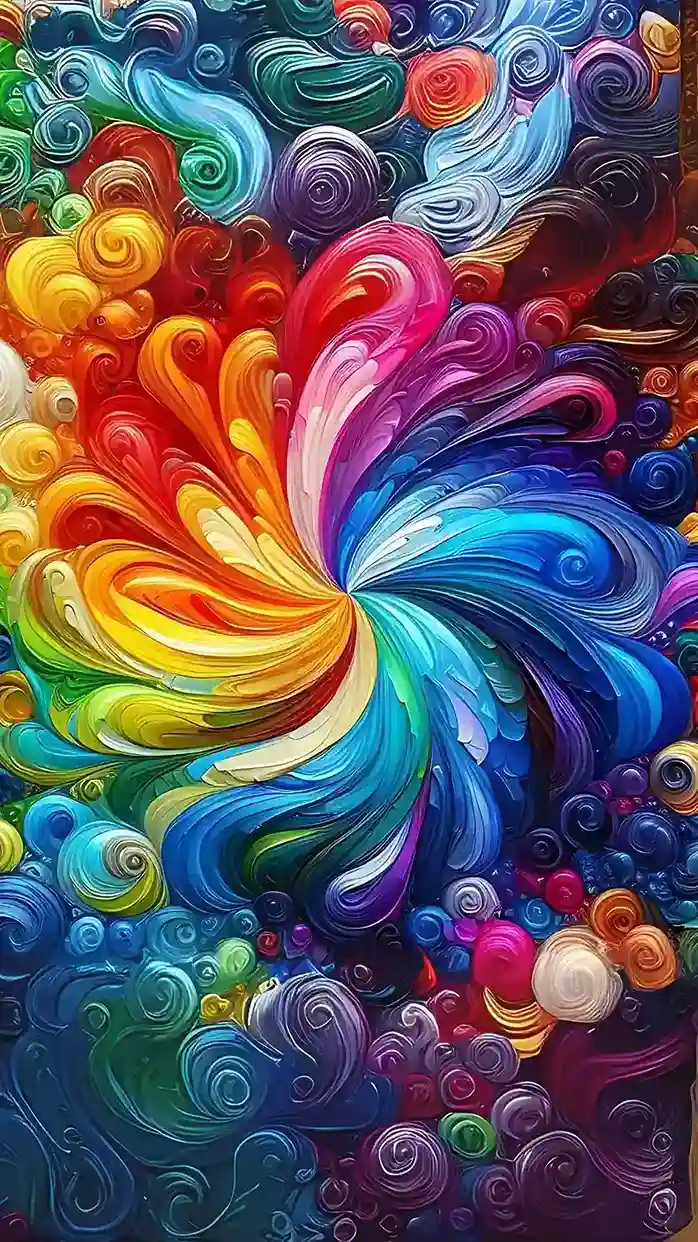
It is the Universal mind or the aggregated mind-variety that gives rise to nature.The Images of the people and the triangles represents the objectification of the Universal mind or the conglomeration of the mind variety. It is to be understood that the apparent bodies of living entities as well as non-living entities are the byproducts of the mind alone.
The experiences of the world including experience of space and time is an expression of the Universal mind. Thus, the one Unity of Consciousness becomes many in the form of people, objects, time, space and events.
Spirituality: Pathway to the Source
It is important to note that spiritual realization is the reverse journey from objects and people back to the source of pure consciousness. This is obvious because all secondary entities are contained within the field of Pure Consciousness alone.
When one commits oneself to spiritual practice, the first thing that is to be realized is that the world of thoughts, emotions, time, space and events is a representation of the varied mind-field. Hence, they do not represent the original reality.As one progresses through spirituality, layers of duality get cleansed. One can witness pure consciousness reflected on the clarified subtle layer of the mind.
One, thus gets the glimpse of one’s own Reality.Usually our responses to our inner tendencies are automated.They are based on the Samskaras (संस्कार impressions) embedded deep within our psyche.The automatic responses happen based on reactions in the psyche and operate at an instinctual level.Here is where the role of conscious awareness can be put to use to alter instinctual responses.
So, Samskaras in other words simply means instincts that have an impact on our character and personality without any conscious effort.It is an autonomic response.However, altering the negative tendencies requires conscious efforts from our side.This conscious awareness is first tuned to our particular aim of life.
How to Change Samskaras?
For example the aim of one’s life must be to succeed in national politics.Certain others may have God-realization as one’s primary goal.In accordance to that goal, the conscious awareness is set, as the toll gate.The work of the toll-gate is to filter the instinctual responses emerging from the unconscious and subconscious levels and alter it to suit our fundamental, primary goal.

All thoughts shall then have to be stopped and investigated in accordance with our ultimate aim.Those thoughts of the Samskaras in allegiance with our goal are accepted or allowed and those thoughts alone are allowed to transmute as words and actions.Those thoughts emerging from innate tendencies which do not resonate with the goals, are changed or replaced with ones conducive for our goal.
The crux of the matter is that the mind has to be occupied in alliance with our goals.Decisions need to be taken and acted upon, polarized in the direction of our goals.There are two concepts in this regard which have to be looked into through conscious awareness.
2 factors that Impact our Action
They are “Shreyas”(श्रेयस desirable) and “Preyas”(प्रेयस pleasurable).They means what is “good for me” and what is “pleasant to my senses” respectively.For the common man the two are at loggerheads with each other.Normally what “I like to do” is very different from what “is pleasant for my senses”.
For example more than 90% of the people “Want to get up at 5:00 AM every morning and follow a strict diet and exercise routine” but the same 90% of the people “Like to keep sleeping and cuddling till 8:00 AM in the morning”.Thus there is a certain coercion of interests in the same individual.Finally people end up doing what they like rather than doing what is beneficial for them.
What is Removing Samskaras at a Practical Level Feel Like?
Decision is more about sacrificing the option of “what I like”.When this is adhered to, naturally we end up doing what is “good for us.”When there are two choices, the first thing is to remove the option unsuitable for us, as the first step.Now, when this is done with emphasis, naturally we end up doing that which is good for us.

So, the very first step is to accept what is truly beneficial for us and then work towards it by Exercising Conscious Will Power, a.k.a Free Will.Having said this, at a practical level it is a difficult ask.What is important is to contemplate on the science of Samskaras and train the intelligence on the concept.When the conviction becomes ripe, implementation shall become easy.
Concept of Samskaras and Vrittis
The science of Samskaras say that samskaras (innate hidden tendencies) exist in the subconscious, unconscious level.Hence one shall not have direct access to it.When these Samskaras manifest on the conscious level, it is called Vrittis (वृत्ति) or thoughts emerging out of Samskaras.
When a Vritti is acted upon, that produces a further additional branching in Vrittis, which seeps down as Samskaras.This cycle continues unabatedly creating an endless, ever growing Loop of Samskaras and Vrittis.This is how habits are unconsciously formed, when we do not understand the science of samskaras.These habits can debilitate and cripple our way of functioning.
Ending the Samskara Vritti Cycle
However if consciousness is applied to Vrittis and decisions are imposed in alignment with our goals, undesirable vrittis are replaced with “aligned” vrittis, in the form of thoughts, word and deeds.This produces aligned impressions on the mind, which impinges into the subconscious and unconscious layer, thus forming desirable Samskaras.
When this cycle continues from unconscious and subconscious into Vrittis and then through conscious awareness we convert them into positive vrittis, forming positive samskaras to seep in our psyche.Through this process, all Samskaras become diluted and re-written by the new ones.
Hence old habits and compulsions are replaced by new positive habits which gets into the feedback system, pushing the individual towards his cherished goal.Thus when conscious thought is applied, slowly the subconscious layer of consciousness gets purified.The initial struggle to take up “Shreyas” or desirable thought, word or action slowly eases out and “Shreyas” becomes a habit of virtue over time.
How are Samskaras Formed?
Before we delve deep into the concept of Samskaras let us try and answer this question as we will better understand the concept after finding an appropriate answer for it.Why the Bhagavad Gita was delivered to Arjuna and not to Duryodhana?Well, it is interesting to know why.
Krishna Advices Duryodhana
There was once an occasion when Lord Krishna tried to advise Duryodhana on lessons in Dharma (धर्म).He tried to enlighten Duryodhana on Dharma (righteousness) and Adharma(अधर्म unrighteousness).Sri Krishna highlighted the wrong actions of Duryodhana towards the Pandavas.
Duryodhana Reveals his State of Mind
To this, Duryodhana simply smiled and answered humbly “Krishna, it is not that, what you are telling is not getting into my head.I am also totally cognizant of the fact that, what you are saying is just the Truth and I am thankful to you that you have confirmed it.But my problem, you do not seem to understand.
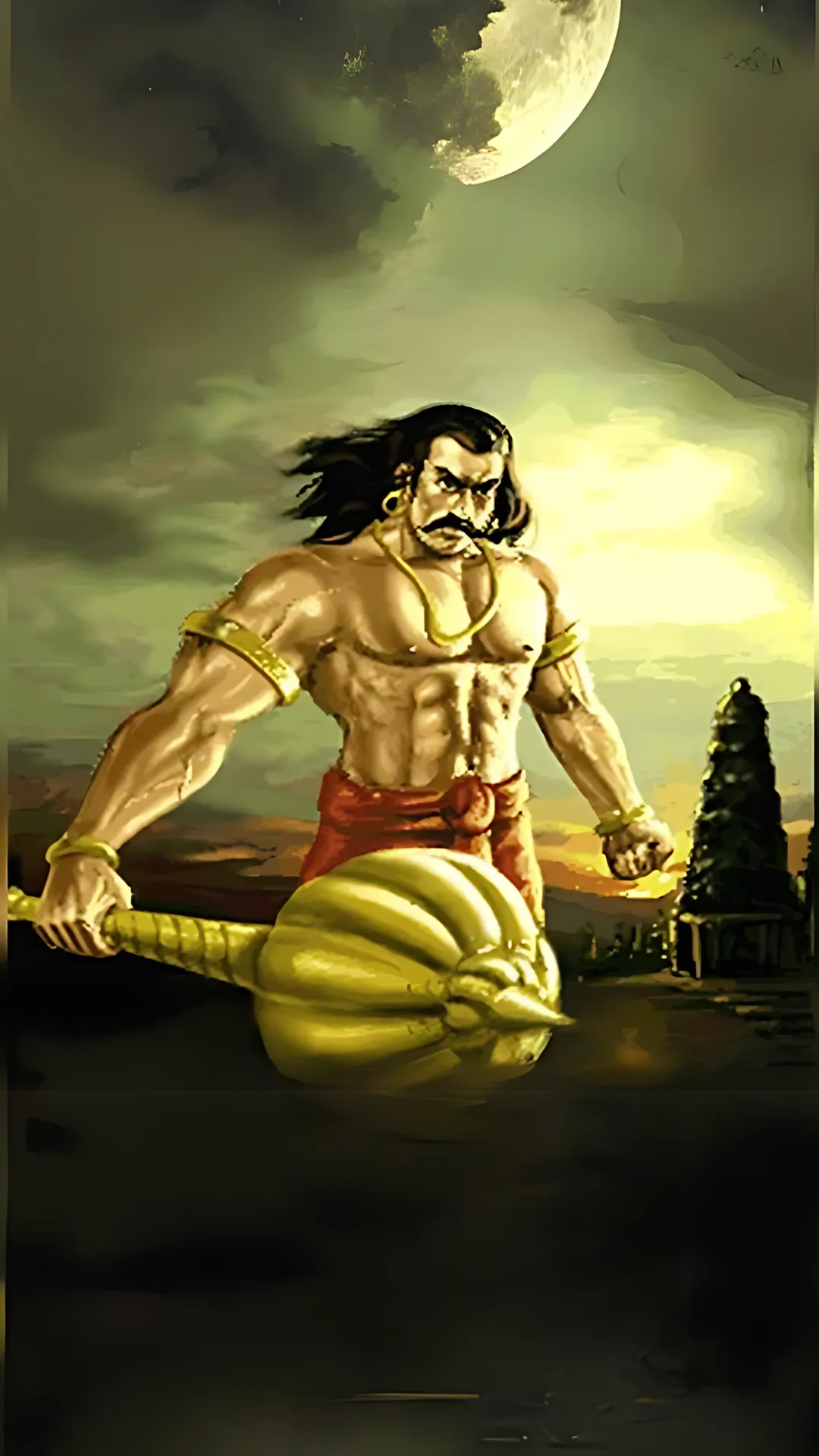
My heart does not go with what is appropriate in the line of Dharma.My intentions find support only in Adharma.I cannot persuade myself to do that which is Dharma.I can never stop myself from doing all that you consider Adharma.
This is the nature of my problem.I have a strong tendency; a power within me that enforces me into doing Adharma and keeps me away from all that is Dharma.I am more than certain that you do not have a solution for my peculiar problem.”Well, this is the same situation of a common materialistic man of Kaliyuga today.
Arjuna’s Dilemma
Arjuna asks a similar question to Sri Krishna, in the 4th Chapter of the Gita.He enquires “Lord, by what force does an individual do wrong, knowing well that what he is doing is against Dharma, although he has intentions of doing Dharma?”
The difference in the statements of Duryodhana and Arjuna is a subtle one.Duryodhana puts the same subject as a matter of fact, as an emphatic statement, without wanting to know the solution.In a way, he is completely satisfied with his arrogance and ignorance.
On the other hand, Arjuna puts the same subject in question, as an enquiry.He is seeking an answer from the Lord and is ready to do whatever it takes to get rid of such an attitude.Both, the statement of Duryodhana and the Question of Arjuna boil down to the state or level of consciousness.Duryodhana revolts and that is his tendency, his nature. It forms his state of consciousness.Similarly, Arjuna seeks and wants to change his life, in the positive direction. This tendency forms his state of consciousness.
Subconscious and Unconscious Mind
There is a level of consciousness which lies below our normal wakeful level of consciousness; our subconscious and unconscious states.At that level, there are samskaras (संस्कार) embedded at that level, which can be roughly known as tendencies.
These tendencies form our Nature, known in Sanskrit as Prakriti (प्रकृति).This Prakriti consists of Raga-Dvesha (राग-द्वेष), roughly known as likes and dislikes in the English language.The likes include our tendency of attachment to pleasant experiences.Dvesha represents our tendencies of repulsion, our irritation towards certain things which causes displeasure.
The attachment and displeasure in our system forms due to strong habits that we have adopted in this lifetime or in previous our previous lifetimes.The heap of our practices and habits go and settle down at the subconscious mind level.The subconscious mind is a stack, lower to our normal mode of consciousness.
Thus aversion and attachment are the result of the strong samskaras or tendencies. Samskaras mean tendencies, particularly strong ones which may develop in the current lifetime or is a result of previous lifetimes.These tendencies are deep rooted and one is never conscious of these tendencies as they manifest.
Mostly the Subconscious Tendencies remain submerged within our psyche, unexpressed.Then there is our interaction with the world, which produce certain reactions at the conscious level.The interactions may be in the form of thought, word or actions.Thus these interactions produce a certain response in our system.This response appears on the conscious level.
Practicality of Samskaras
If somebody hurts one’s feelings, our response may be to dart back at the person through anger, harsh words or through sulking at the thought level.An example to this effect can be useful.Suppose I am suffering from diabetes.I make up my mind, not to have anything sweet for the day.I am with a friend, who is hungry and I have already had my lunch.As we are traveling, we halt at a restaurant so that the friend can have his meal.

We enter the shop and my eyes fall on a pastry.I restrain myself knowing that I should not have it.The meal order is given and I see my friend having his lunch seated opposite me.I keep looking at the pastry. Its already half an hour and I have started getting pangs of hunger.I fall for my temptation and order for the pastry and eat it.Why did I eat it, can be a logical question.
Power of Samskaras
The answer to that is based on the habits that I have already formed as I grew up.I have spent my life as a child eating pastries, all the time, especially during outings.I have developed a sweet tooth as a result.The Samskaras for sweet has already taken root deeply.
Now, many years have passed and I have developed diabetes.However nothing has been done to tackle my inner urge and this urge needed a trigger.My entering the restaurant and setting my gaze on the pastry, revived the silent, unexpressed tendencies.The waiting time, added itself to the already boiling tendencies of eating the pastry.
Thoughts about eating and enjoying the pastry started to reel in mind (samskaras agitate the senses), the urge lingers on, the senses got activated.We ate the pastry to satiate our senses which might otherwise spin the reel and agitate us further.
This is raga (attachment).The urge was so severe that the images of the pastry (thought) in my mind and in front of me at the counter (interaction with the world) made me order for a pastry (word) and then once I received it, I ate it up (action).The samskaras subjugated all my thoughts about the diabetes disease and tricked me into eating the pastry.I did that very thing that could cost my life.This is the power of Samskaras.
Please Like the Blog and Share it for Maximum Reach

